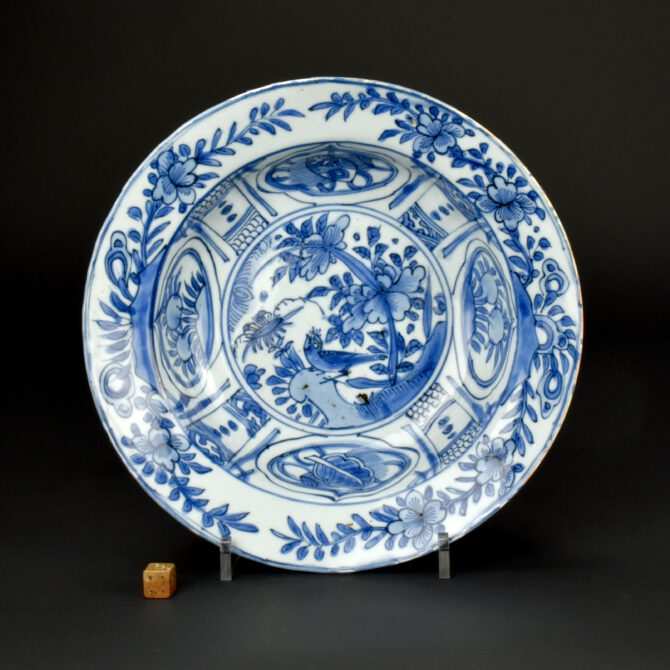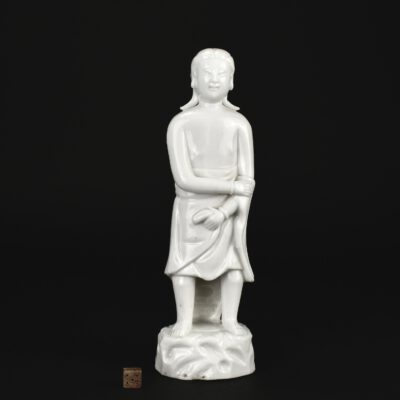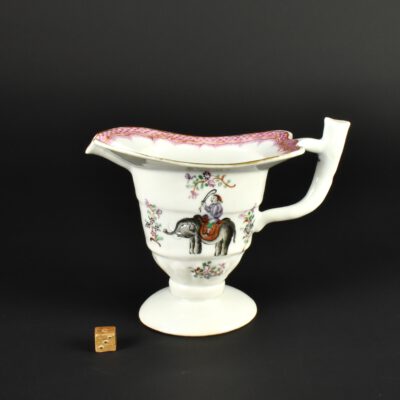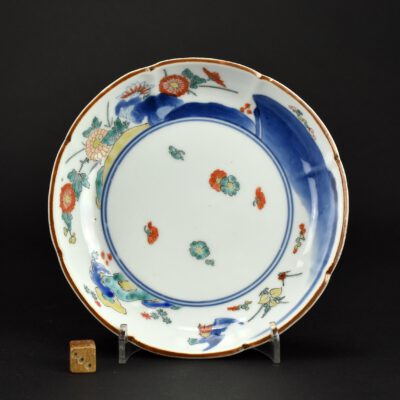
A Ming Wanli Kraak Blue and White Porcelain Klapmuts Bowl
Wanli 1573 - 1620.
A Wanli Kraak Porcelain Klapmuts Bowl, Wanli (1573-1620) c.1590 - 1610, Jingdezhen Kilns. This shallow Ming klapmuts from the Wanli period, is decorated with a bright, rather clear cobalt blue. The design on the everted rim is unusual for Kraak porcelain, it consists of a repeated flower and rock design, without the interruption of borders. The central design in the well is typical of Kraak ware, with a bird on a rock among peony and other plants. The moulded cavetto has pointed oval panels with precious objects. The back similarly decorated, the base has a partly visible European inscription.
"In the past scholars postulated various theories concerning the origins of the word Kraak, which came to be commonly used in the West in the twentieth century. The earliest textual evidence known thus far of the use of the term ‘carracke’ refers to dishes which, in all probability, were Kraak porcelain dates to 1596. An ECA Orhans Court inventory from Exeter, England, dating to November of that year mentions that the apothecary Thomas Baskerville left ‘6 Carracke’ dishes." Teresa Canape (see References).
For more information about Kraak Ware porcelain you can go to the History section of our website-menu, or click on the link: Kraak Ware Porcelain.
See Below For More Photographs and Information.
View details
-
Oriental & European CeramicsEstablished in 1980
 ALL ITEMS FOR SALE
ALL ITEMS FOR SALE -
 CHINESE CERAMICS
CHINESE CERAMICS -
 JAPANESE and EUROPEAN CERAMICS
JAPANESE and EUROPEAN CERAMICS -
 Recently Added
Recently Added -
 Sold Archive
Sold Archive
Buying Antique Ceramics From Robert McPherson Antiques
Read more
Robert McPherson Antiques
Specialist in Oriental Ceramics
WELCOME TO OUR WEBSITE We hope you find it easy to navigate and enjoy looking at what we have on offer. As well as the objetcs we have for sale, we offer a selection of scholary pages to inform you about the different subjects concerning Oriental Ceramics. We pride ourselves on offering genuine pieces of rare and unusual Chinese and Japanese porcelain and pottery. Everything we sell is guaranteed to be in the condition we describe it as on the website and on the invoice. If you have any questions please get in contact with us. We also have a mailing list that you can subscribe to. You will receive a newsletter when the website is updated. Regards, Robert McPherson.
About us